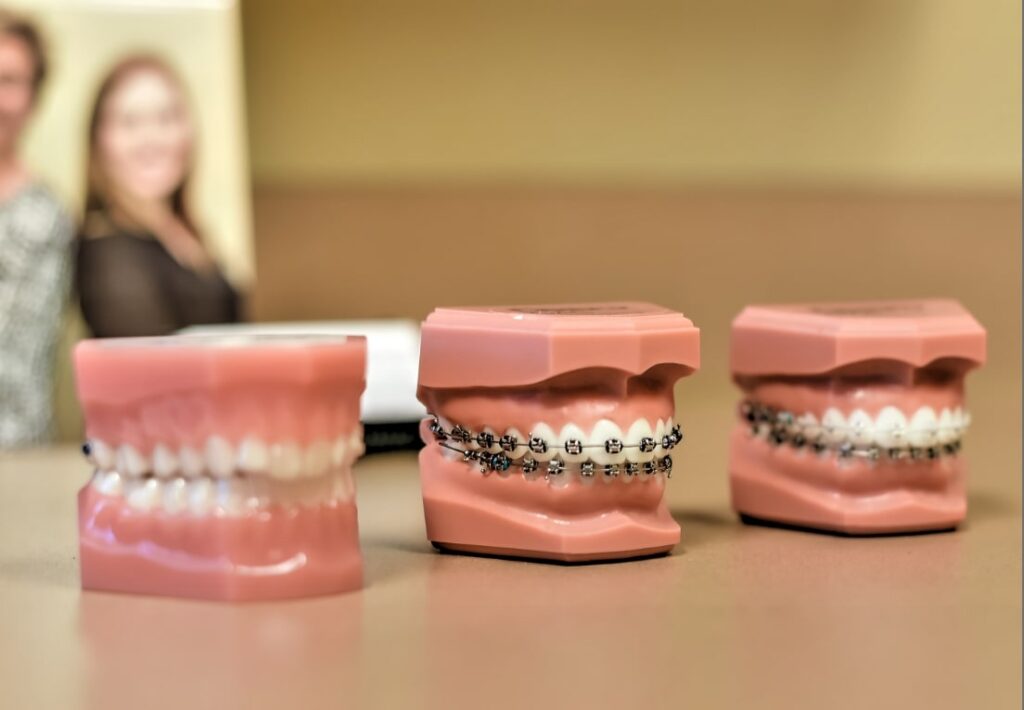How Cumming Orthodontics Addresses Common Braces and Invisalign Issues
Comprehensive Guide to Orthodontics Treatments for Dealing With Dental Misalignments
In the world of orthodontics, the trip to achieving a completely lined up smile entails a myriad of treatments tailored to fix oral imbalances. From typical braces to unnoticeable aligners and also medical alternatives, the area of orthodontics offers a variety of options to resolve differing levels of oral irregularities. Understanding the complexities of each treatment, including their devices, advantages, and possible drawbacks, is essential in making informed decisions about one's orthodontic treatment. As we navigate through the extensive guide to orthodontic procedures for fixing dental misalignments, the elaborate details of each method will unravel, losing light on the course toward a practical and harmonious dental positioning.
Orthodontic Procedures Introduction

Along with clear aligners and typical braces, orthodontists might also suggest other treatments like headwear, palatal expanders, or retainers to deal with details positioning concerns (orthodontics). These procedures are customized to each client's one-of-a-kind needs and may entail a combination of treatments to accomplish the wanted results. Routine changes and monitoring are vital components of orthodontic treatment to guarantee progression gets on track and to make any required modifications along the way. By going through orthodontic treatments, people can not only achieve a straighter smile but also enhance their general dental wellness and feature.
Standard Dental Braces: Exactly How They Function
When considering orthodontic therapies for dental imbalances, standard braces attract attention as a reliable technique for correcting teeth placing. Conventional dental braces consist of braces, cables, and bands that interact to use constant pressure on the teeth, slowly moving them right into the desired placement. The brackets are connected to the teeth utilizing an unique adhesive, and the wires are threaded via the brackets. By readjusting the tension of the cables, orthodontists can control the instructions and pressure put on each tooth, guiding them into correct alignment with time.
As stress is used to the teeth via the dental braces, the bone bordering the teeth is improved to sustain the brand-new tooth placements. People will certainly require normal changes at the orthodontist's workplace to make certain the dental braces proceed to use the right pressure for efficient teeth motion.
Unnoticeable Aligners: Benefits And Drawbacks
Unnoticeable aligners provide a convenient and very discreet choice to standard braces for fixing dental misalignments. These clear, custom-made trays are basically unseen when put on, making them an attractive choice for individuals seeking an extra visually pleasing orthodontic treatment. One of the key advantages of unnoticeable aligners is their removability, allowing for easier upkeep of oral hygiene contrasted to conventional braces. People can eliminate the aligners before consuming or brushing their teeth, reducing the threat of food getting embeded the home appliance and simplifying the cleansing process.

Surgical Orthodontic Options
Surgical interventions in orthodontics present viable options for dealing with complex dental misalignments that might not be effectively resolved through standard orthodontic therapies. While unseen aligners and standard dental braces can correct several orthodontic concerns, specific situations require medical treatment to accomplish ideal results. Surgical orthodontic alternatives are commonly advised for serious malocclusions, significant jaw discrepancies, and instances where the underlying bone framework needs modification to accomplish appropriate alignment.
One common medical orthodontic procedure is orthognathic surgery, which entails repositioning the jaws to correct useful problems such as difficulty eating or speaking. This surgery is commonly carried out in collaboration with an orthodontist that helps straighten the teeth before and after the treatment. Surgical orthodontics may additionally include This Site procedures to subject impacted teeth, eliminate excess gum cells, or reshape the jawbone to produce a more unified from this source face profile.
Prior to taking into consideration surgical orthodontic alternatives, clients undergo a thorough examination to determine the need and potential advantages of such interventions. cumming invisalign. While surgical treatment might appear difficult, it can dramatically improve both the feature and aesthetics of the smile in situations where standard orthodontic treatments fall short
Retainers and Post-Treatment Treatment

Post-treatment treatment involves following the orthodontist's directions faithfully. This might include appropriate dental health techniques, attending follow-up visits, and putting on the retainers as prescribed. Failure to follow post-treatment treatment guidelines can result in relapse, where the teeth gradually move back towards their initial placements. Regular retainer wear, good oral hygiene, and regular dental check-ups are important for preserving the results achieved through orthodontic surgery and ensuring the long-term stability of the corrected oral placement.
Final Thought
In final thought, orthodontic treatments provide numerous choices for dealing with dental misalignments. Surgical orthodontic choices are available for a lot more severe misalignments. On the whole, orthodontic procedures can successfully improve dental wellness and aesthetic look.
As we browse through the detailed guide to orthodontic procedures for remedying oral misalignments, the complex information of each method will certainly unravel, shedding light on the path towards a practical and unified dental positioning. - cumming invisalign
One of the most common see page orthodontic treatments is the usage of dental braces, which are composed of metal brackets and cables that use gentle pressure to slowly change teeth right into the desired position.When thinking about orthodontic therapies for oral imbalances, traditional braces stand out as a time-tested technique for remedying teeth placing. In addition, unseen aligners may not be suitable for complex orthodontic issues that require more considerable teeth motion, as they are commonly recommended for moderate to moderate situations. Retainers are tailor-made orthodontic gadgets created to hold teeth in their remedied settings after the conclusion of orthodontic treatment.